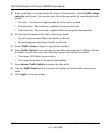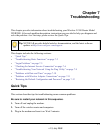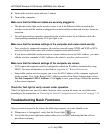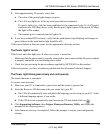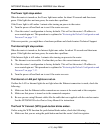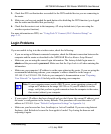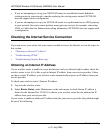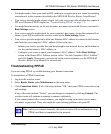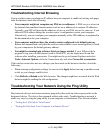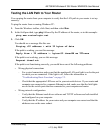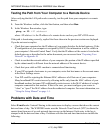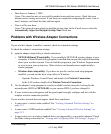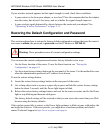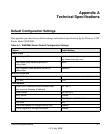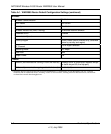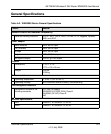
NETGEAR Wireless-N 300 Router WNR2000 User Manual
7-8 Troubleshooting
v1.3, July 2009
Troubleshooting Internet Browsing
If your wireless router can obtain an IP address but your computer is unable to load any web pages
from the Internet, check the following:
• Your computer might not recognize any DNS server addresses. A DNS server is a host on
the Internet that translates Internet names (such as www addresses) to numeric IP addresses.
Typically, your ISP will provide the addresses of one or two DNS servers for your use. If you
entered a DNS address during the wireless router’s configuration, restart your computer.
Alternatively, you can configure your computer manually with a DNS address, as explained in
the documentation for your computer.
• Your computer might not have the wireless router configured as its default gateway.
Reboot the computer and verify that the wireless router address (www.routerlogin.net) is listed
by your computer as the default gateway address.
• You might be running login software that is no longer needed. If your ISP provided a
program to log you in to the Internet (such as WinPoET), you no longer need to run that
software after installing your router. You might need to go to Internet Explorer and select
Tools > Internet Options, click the Connections tab, and select Never dial a connection.
If the wireless router does not save changes you have made in the browser interface, check the
following:
• When entering configuration settings, be sure to click Apply before moving to another screen
or tab, or your changes could be lost.
• Click Refresh or Reload in the Web browser. The changes might have occurred, but the Web
browser might be caching the old configuration.
Troubleshooting Your Network Using the Ping Utility
Most network devices and routers contain a ping utility that sends an echo request packet to the
designated device. The device then responds with an echo reply. Troubleshooting a network is
made very easy by using the ping utility in your computer or workstation. This section includes:
• “Testing the LAN Path to Your Router”
• “Testing the Path from Your Computer to a Remote Device”



